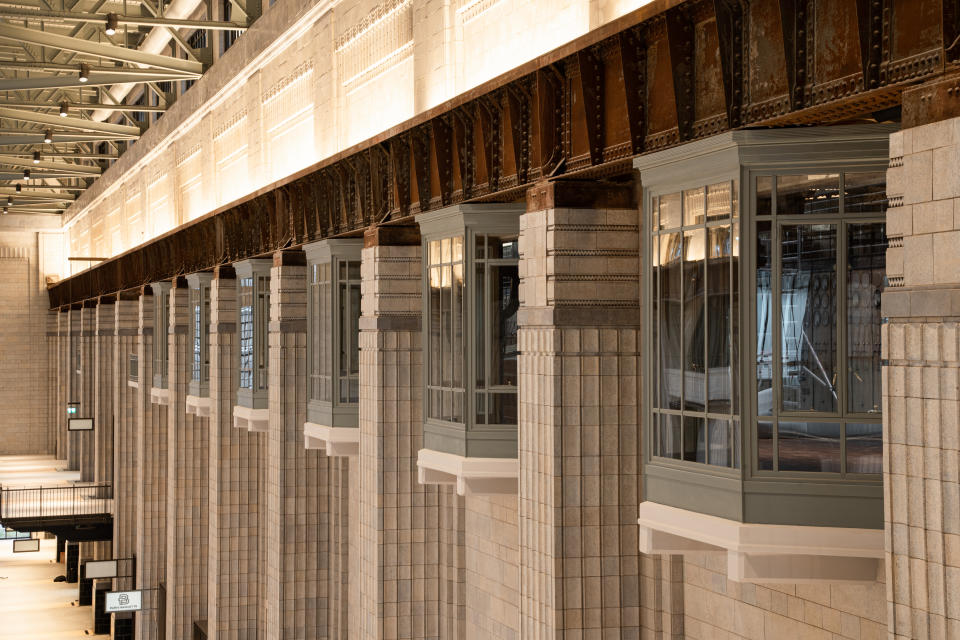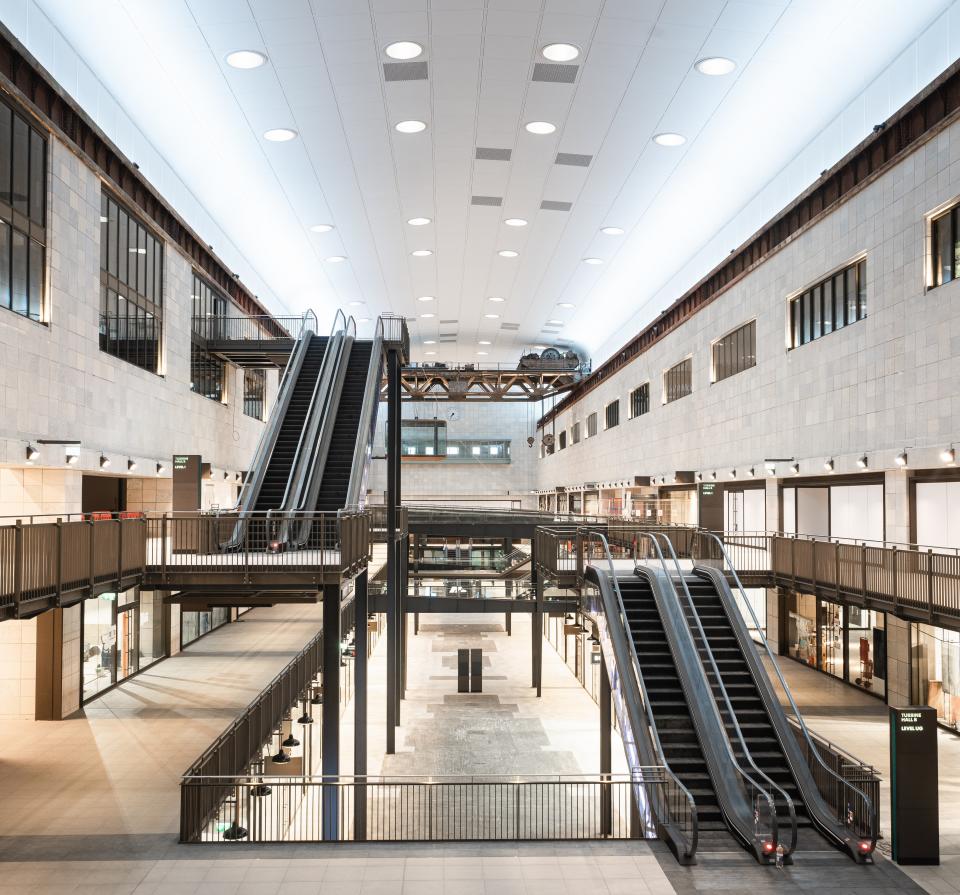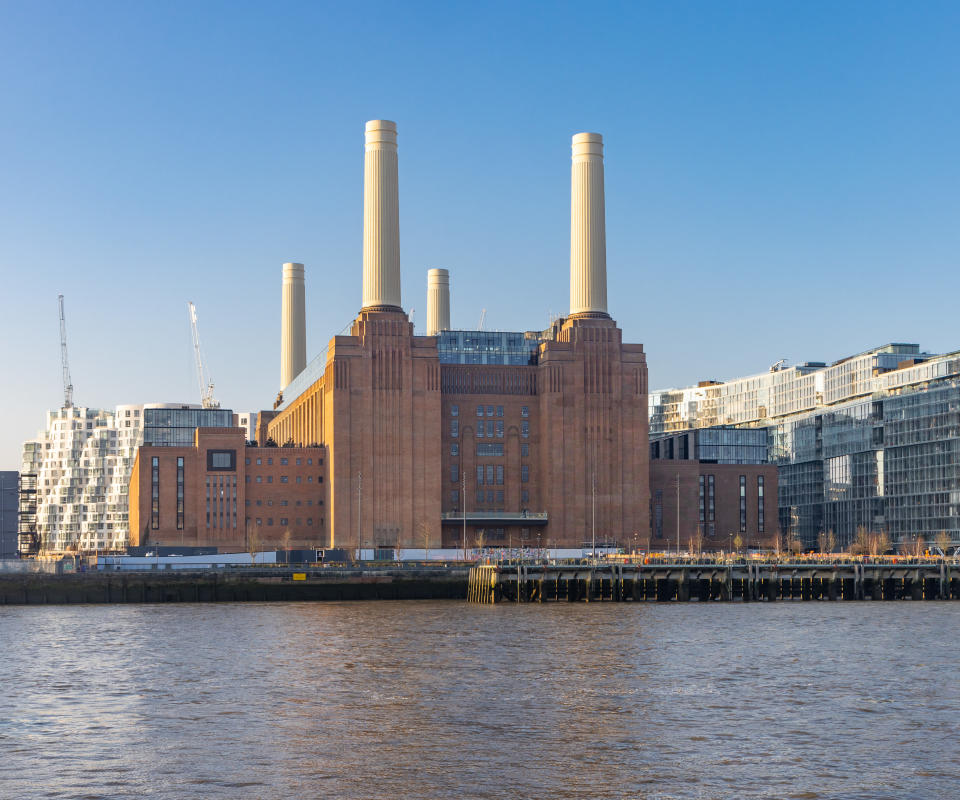Battersea Power Station Lights Up Again, This Time With Retail

LONDON — The lights at Battersea Power Station went out in 1983, when Margaret Thatcher was still prime minister, Culture Club’s “Karma Chameleon” was the year’s bestselling single, and Vivienne Westwood, Katharine Hamnett and Laura Ashley were among the city’s hottest labels.
Next week they’ll finally flicker back on when Battersea Power Station reopens as a 21st-century retail destination that mixes high-end and high street, and aims to draw international visitors and locals who’ve been dreaming of a world-class place to shop, south of the Thames.
More from WWD
Under restoration for 10 years — and first discussed more than three decades ago — Battersea Power Station will open to the public on Oct. 14. While it will be only a fraction of the size of the city’s megamall, Westfield London, it aims to pack a colorful, and commercial, punch, with 100 shops, bars and restaurants, sitting within the building’s original Art Deco and 1950s-era turbine halls.
From the get-go, the developers’ approach to retail has been unconventional. Battersea Power Station wasn’t ever going to be just another British shopping mall. There is no anchor department store; no grouping of retailers by product category, and the feel is more museum than commercial space.
“The original vision was to create a new destination for London, and it was really important for it to be accessible, and democratic. Getting something for all price points was really key,” said Sam Cotton, head of leasing at Battersea Power Station.

The owners, a Malaysian consortium comprising Sime Darby, SP Setia and the Employees’ Provident Fund, purchased the property a decade ago and despite macro-economic challenges in the U.K., Brexit and COVID-19, they’ve delivered on that democratic vision and managed to finish the project without too much delay.
Battersea Power Station is the centerpiece of the consortium’s 9 billion pound, mixed-use development that spans 42 acres, has its own London Underground station and will eventually see an estimated 25,000 people living and working on the site.
When it opens it will be one of the largest retail destinations in central London and is set to contribute an estimated 20 billion pounds to the U.K. economy.
The station, which at its peak provided London with one-fifth of its coal-fired power, has been meticulously, and lovingly, preserved.
The building’s original brickwork, tiles, bridges and machinery have all been cleaned and polished. New features have also been added, including Lift 109, a glass elevator that takes visitors to the top of the northwest chimney for a 360-degree view of London.
In addition to the 100 shops, bars and restaurants, there will be 254 apartments in the building (some with balconies overlooking the shopping area), office space and a two-screen cinema.

Apple is the largest tenant with offices spanning 500,000 square feet over six floors. The space has been designed by Foster and Partners, which has also worked on other residential projects nearby. Last month, Apple chief executive officer Tim Cook paid a visit, and said he plans to return early next year when the Apple teams move into the new space.
In a Sept. 26 tweet, Cook said Apple can’t wait to move into the power station. He said the company’s move is “a tribute to this incredible city, and a reflection of our commitment to Apple’s future in the U.K.”
On Oct. 14 some 60 shops will open, with a second phase cutting the ribbon before Christmas. Cotton said 90 percent of the overall space has been let or is under offer.
Brands taking up residence include Watches of Switzerland, which sits at the power station’s main entrance; Nike; Adidas; Aesop; Le Labo; Space NK; Ralph Lauren; Mulberry, and Lululemon. At 15,000 square feet, Uniqlo has the largest space inside the power station.
Cotton said that, over the years, brands became more familiar with the project, and asked for more space.
Zara began by committing to 20,000 square feet. Next week it will open a store that spans 50,000 square feet in a new, pedestrian-ized high street known as Electric Boulevard, part of the overall power station complex.
Last month, during a quarterly results update, Inditex CEO Oscar Garcia Maceiras highlighted the upcoming Battersea opening as an example of how the company wants to position Zara as more of an upscale fashion brand and burnish its reputation.

There are local, independent shops in the mix, too. There will be a Battersea Bookshop in cooperation with Stanfords, and a store called Petit Pli, which makes sustainable children’s clothing.
Curated Makers, a retail concept that links local independent artists and makers with the high street, will open its first pop-up in London at the power station. More than 40 local independent small businesses will be selling homeware, candles, clothing, artwork and other products.
Asked about the retail mix, and the absence of an anchor store, Cotton said London has enough department stores and that he and his team wanted to focus instead on mono brands. “Particularly from a cosmetics and accessories point of view, we thought if we did not have a department store, it would give us that real opportunity to bring the mono brands in.”
Cotton said they also made an effort to create a diverse lineup of stores rather than cluster them by category.
“Sometimes two beauty brands will sit together, like in the case of Space NK and Le Labo, but otherwise we’ve really tried to put big and small next to each other, which is different to a traditional mall environment,” Cotton added.
Restaurants are also a mix of high- and midmarket. A 24,000-square-foot food hall is set to open next year, adding to an offer that will range from Gordon Ramsay’s Bread Street Kitchen & Bar and Clean Kitchen Club, to Pret a Manger and Joe & The Juice.
Cotton and his team began working on the retail in 2015 when London was thriving.
He said while the shock of the Brexit referendum in 2016 delayed his team’s work, it did not become a major issue.
“It slowed down European brands’ decision-making, and we probably lost 12 months, but we got the brands that we wanted and it has all come good,” he said.
Cotton added that the pandemic was a bigger challenge “because nobody really knew what they were facing, and brands really couldn’t make decisions. But we still did an enormous amount of leasing throughout 2020 and 2021,” he said.
The pandemic, he added, also offered a silver lining in that “brands had access to more data than they’d ever had before. They knew where that customer was,” and they could also see the demand coming from southwest London.
Cotton added that the lockdown months helped people discover the new Battersea neighborhood.
“It became tangible. Lots of people were walking to Battersea Park, they were walking over Chelsea Bridge and along the riverfront. They were seeing the location themselves for the first time and that helped us enormously,” said Cotton.
